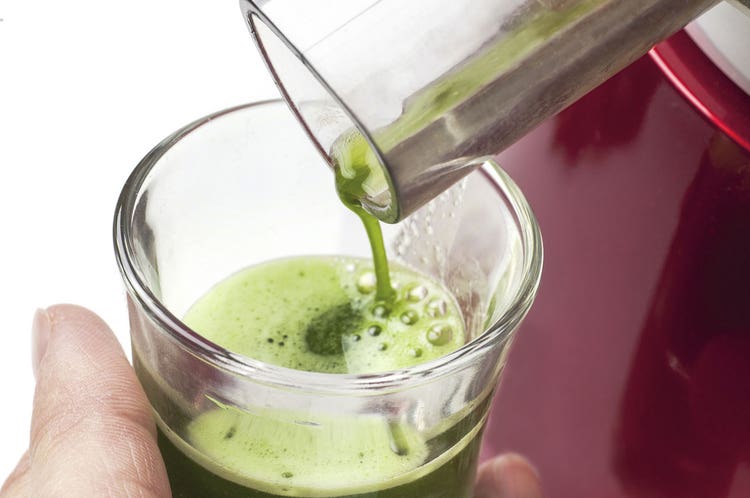Green juicing: health or hype?

Today, the hottest juicing trend is green juice. While vegetable juice is nothing new, green juicing in particular uses large quantities of leafy vegetables and brassicas such as kale, celery, cucumber, broccoli and spinach, which are generally sweetened with green fruits, including kiwi and apple. When it comes to the juicing, health buffs are quick to point out that there’s a strong difference between regular juices and the cold-pressed type. According to the cold-pressed converted, it’s all in the method. Cold-pressing extracts juice by first crushing the fruits and vegetables, and then pressing them to squeeze out the highest juice yield, without using heat. On the other hand, the traditional centrifugal machine uses fast-spinning blades that heat up as they spin, oxidizing and therefore destroying some of the nutrients in the juice.
WHAT ARE THE HEALTH BENEFITS OF GREEN JUICING?
A well-balanced green juice can pack seven serves of fruits and veggies into each bottle, so it’s most certainly a healthy way to sneak in nutrients if you’ve been slacking on salads or broccoli lately. However, claims about weight loss are questionable. Juicing strips away the nutrient-rich fiber (found in the pulp and skin of fruit and vegetables), meaning the body absorbs the fructose, or fruit sugar, more rapidly. This can wreak havoc on blood sugar levels, resulting in fatigue, rapid weight loss — most likely from water and muscle loss — and blurry vision.
Proponents of juicing also say you can achieve the maximum nutritional benefit from juicing because the body can absorb the nutrients better and it provides much needed rest for the digestive system. Some also claim that juicing can reduce the risk of cancer, but there is no scientific support for this. The notion that our digestive system needs a break is also nonsense. In fact, what the digestive system can really benefit from is roughage, and evidence shows a strong association between fiber and a reduced risk of some of our most widespread chronic conditions, including heart disease, type 2 diabetes, obesity and some cancers.
WHAT ABOUT GREEN SMOOTHIES?
Unlike juicing, smoothies blend the whole fruit and veg, including the fiber.Generally thick and shake-like, they combine leafy greens and fruit with milk, yogurt and nuts or seeds, giving you the added protein, low GI carbs, heart-healthy fats, calcium, B vitamins and potassium — a mineral especially important to replenish after a workout to help with hydration.
However, some smoothies may have up to 31 teaspoons of hidden sugar found in fruit juice concentrates, frozen yogurt and sweetened juice, which can add up to roughly 478 calories per regular serve — roughly the same amount of calories as a full meal, rather than a quick, healthy drink on the run.
To ensure your smoothies are not too calorific, choose your ingredients wisely. Stick to three to four key ingredients such as fresh or frozen fruit, vegetables, yogurt or milk and flaxseed or chia.
BOTTOM LINE
Green beverages can be a refreshing and efficient way to consume much needed fruits and veggies, provided they complement your diet rather than replace it. But, if you’re trying to lose weight (and want to avoid feeling hungry), you’re better off chewing whole fruit and veg. In other words, whole foods are still the optimal way to ensure you’re getting plenty of fiber in your diet and are more satiated. Finally, if you do decide to try a juice cleanse (perhaps to break unhealthy eating habits), choosing a vegetable-based one is a sure-fire way to reduce the calorie and sugar content.